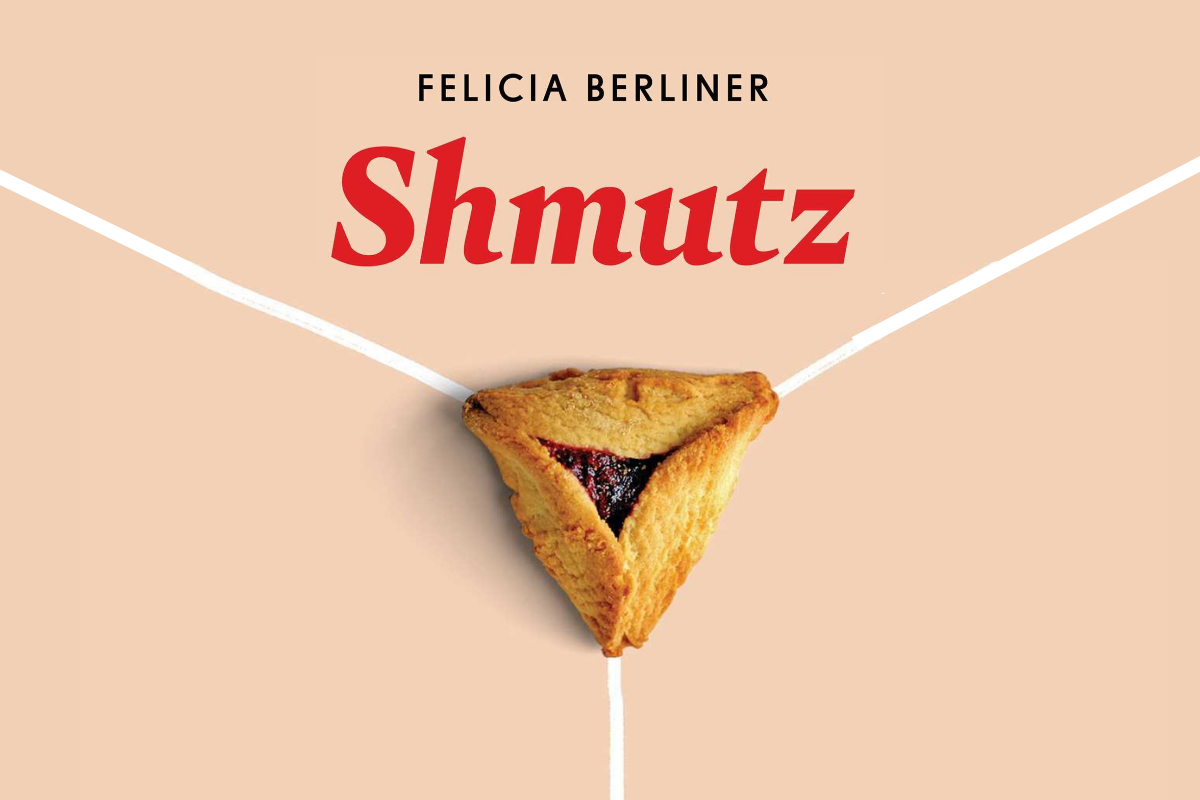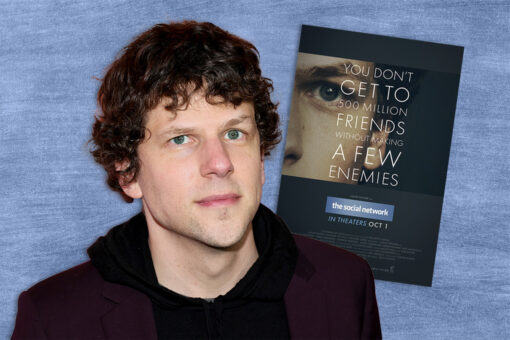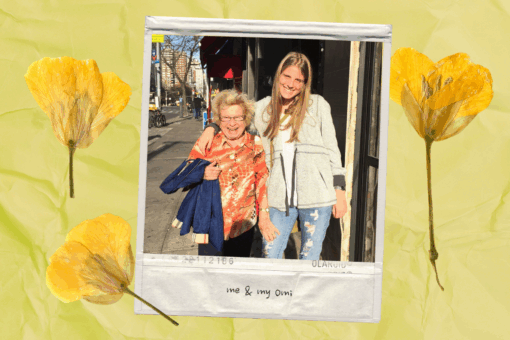In the case of “Shmutz,” the debut novel by Jewish writer Felicia Berliner, you actually kind of can judge a book by its cover.
Featuring a flaky, jam-filled hamantaschen with white lines emanating from its corners on a flesh-colored background, the cover design of “Shmutz” does more than simply imply Jewish sexuality. The shmutz, a Yiddish word which literally means “dirt” and can also be a slang term for “smut” or “pornography,” is sensuous and in your face. Your mouth may water a little for the Purim pastry — or for other, less polite reasons. Either way, the cover undeniably piques the interest of potential readers (as evidenced by online buzz); the story inside draws them into a compelling story of Hasidic womanhood, sexuality and feeling pulled between religious and secular identity.
The character at the center of “Shmutz” is Raizl, an 18-year-old woman living in a Hasidic community in Brooklyn. Raizl is intelligent and obedient, but she’s also curious. After receiving a laptop for her college schoolwork — both the computer and college took some convincing with her parents — Raizl discovers that the entire breadth of the internet’s knowledge is available to her through Google, including porn.
Watching one or two videos out of interest soon turns into watching multiple videos a night, discovering her own body and sexual preferences, and participating in other non-kosher behavior. Despite her best efforts, Raizl’s descent into shmutz continues, and her life begins to fall apart: Her grades drop, she gets combative with her therapist and almost all of her shidduch dates fail. Per Felicia’s request, I won’t spoil the ending for you, but I will say that as a reader, Raizl’s conflict is both sympathetic and delicious. Like Raizl herself, I, too, couldn’t get enough of “Shmutz.”
I spoke with author Felicia Berliner about remaining anonymous, why Hasidic stories are having a moment right now and how Torah influenced “Shmutz.”
This interview has been lightly edited and condensed for clarity.
Felicia Berliner is a nom de plume. I’m curious why you’re choosing to stay anonymous with your work? How did you choose the name?
I’m just interested in having some space between my personal and professional life. That’s what’s best right now for me, and I really appreciate people honoring that boundary. I will say that [the name] does tie back to my great-grandmothers with those initials. Their names were Feigel and Beila Dina. One was murdered in the Holocaust and one died of natural causes, and I wanted to honor their spirits.
That’s beautiful. Could you tell me about the process of writing “Shmutz” and about any research you did to write about an ultra-Orthodox Jewish community?
“Shmutz” is fiction, but it grows out of my lifetime of relationships with Orthodox family and friends, and my own yeshiva education through high school. I’m really blessed to have a deep connection with Orthodox thought and culture, and Jewish ritual and text. Those things are certainly very dear to me. And certainly there’s a lot out there now about the Hasidic Jewish experiences and communities. I really encourage people to look at some of the beautiful memoirs that are out there. Again, this is fiction; there’s no attempt to say that Raizl is a real person at all. So I encourage people who really want to dive into Hasidic experiences to look at some of the beautiful memoirs that are out there. Abby Stein’s book “Becoming Eve” is just gorgeous. Shulem Deen’s memoir “All Who Go Do Not Return” is beautiful. And many people now are familiar with “Unorthodox” from the Netflix series, which was adapted from a Deborah Feldman’s memoir of the same name.
I’m interested in your point about the growing interest in Hasidic stories. You mentioned all these great books and “Unorthodox” — there’s also the show “My Unorthodox Life.” What’s your take on why these kinds of stories are having a moment right now?
I can’t speak to all of those series, but I can say that for me, as a writer, what was so powerful about Raizl’s story is that she has grown up completely sheltered from sexual information, even the names of body parts. So she was a fantastic character for this story. As a young ultra-Orthodox woman encountering pornography for the first time, she really experiences that full force and shock of the online porn. And she’s an ideal protagonist because the stakes for her are so high. In her community, the internet is forbidden and sexual information is hidden. So she has to keep all of her exploration a secret.
Even though this is a very particular story, I think we have to think about the fact that a lot of young people are now getting their sexual information from porn, not just this fictional young woman. So she has the advantage of being a very particular and compelling figure in fiction, but also representing what is going on for a lot of young people.
Yeah, absolutely. I definitely connected to that aspect of “Shmutz” because I’m queer and I think pornography can be a tool for queer people to learn about themselves. I had never seen that topic discussed in fiction, so it was really exciting to see that.
I hope that a lot of people will identify the way you do. As a bisexual woman, I definitely relate to that too.
The timing of the book is interesting to me as well. This summer, there were large rallies of Hasidic women where they were encouraged to not use the internet or smartphones. “Shmutz” is set in 2012; do you think that the premise of the book — that a young, Hasidic woman would be able to get a laptop — is still possible now?
One of the points of the book is that the walls are hard to maintain. For a young woman who is smart and curious and has a little bit of access, I think it would be challenging to keep the entire internet out. There still are certainly efforts to keep it out and to protect a way of life that is not rooted in the internet. But I think it’s actually getting harder and harder to do.
How important was it for you to include Yiddish in the novel? Did you grow up with Yiddish, or was it something you learned to write the book?
It was the secret language my grandmother and grandfather used when they wanted to talk without me understanding. I picked up plenty as a kid, but it was not my first language. I definitely learned more in the course of writing this book.
Language can be both familiar and alienating. So, Yiddish is Raizl’s first language, but she does not know all the Yiddish terms for sex and for even the parts of her own body. So she is using the internet as a way to both learn English and learn English names for body parts. But then she’s mostly being exposed to the language through pornographic English, and then has to work her way back through multiple levels of internet searching to get to Yiddish, including Yiddish that she didn’t have as a kid or wouldn’t hear in her home. For her, language is a journey.
Yiddish is a phenomenal, beautiful, dynamic and sculptural language. It’s so much fun to play with as a writer. But there are many languages in “Shmutz.” And Raizl is really finding a way through language, through a kind of trans-language that incorporates multiple languages, to express multiple identities and multiple senses of self. And this multiplicity of languages are helping her translate her multiplicity of experiences and identities into something that she can make sense of.
Absolutely. We also see Raizl and her family making sense of issues beyond her own sexual exploration — learning about other big issues in Judaism like abortion, queerness, therapy, etc. Why did you want to incorporate those issues into the book as well?
I mean, it very much is her story. I didn’t veer off into the siblings too much, I just wanted to refract those sibling experiences through the lens of what Raizl is experiencing and the way that they either help her understand more about what she’s going through or throw it into relief. She sees how this idea that you can only be one thing has an impact on others in her family and her community, too — I wanted that to be in there.
It ties back to the epigraph from Maggie Nelson, who says that this demand that we be only one thing is unsustainable. (I’m paraphrasing.) That is Raizl’s experience throughout the book: She feels both this demand to be secular and this demand to be religious in a certain way, and she is finding she can’t just be one. So that wrestling is the heart of “Shmutz.”
Even though Raizl’s story is very particular, I think people who are not Hasidic Jewish will be able to read this and relate to that experience of feeling like they’re being asked to put themselves in a box, and feeling like they don’t want to be in a box and that they have multiple identities and experiences that need to be honored.
Absolutely. The demand to be secular surprised me, and leaves Raizl’s story in a very open-ended place at the end of “Shmutz.” Do you think you would ever return to Raizl’s story and write more on her?
You know, every day I wake up thinking about Raizl and having a little more dialogue with her. So it’s certainly possible. I still find her a very compelling character.
I love when a novel leaves room for readers’ interpretations and for readers to speculate about what’s going to happen. I have definitely gotten some early readers with very divergent viewpoints. There seem to be some generational divides among women who’ve read it and had really different reactions to what’s going to happen to Raizl after the end of the book, which is great. That certainly fits with the theme of the book. I think it’s exciting for a reader to feel like the writer hasn’t dictated how they’re supposed to feel or think about it, but instead leaves space for the reader to bring their own inquiry and their own conclusions.
Absolutely. In another interview, you spoke about the fact that the Torah influences your writing. The concept of wrestling is present in Torah and Jewish theology, but could you speak to other ways that Torah influenced “Shmutz”?
There’s not a one-to-one parallel with any one biblical story, and, you know, some of the very compelling figures in the Bible are male. But Raizl does think a lot about Moses in “Shmutz,” and reflects on how he accepted his faith and his responsibility in the community. That is a way of refracting her experience and thinking about how she takes on her role as a member of a community. No one’s asked her to go receive the Torah, but she still feels that faith can both elevate and connect one deeply to community and to God… and put one in conflict with oneself.
Raizl thinks about Moses as a figure who’s been asked to take this role that maybe wasn’t the most comfortable for him — he had doubts about himself. And there are certainly other [influences]. I mean, the “Shmutz” cover is a hamentashen, and there are certainly aspects of the Book of Esther.
Right now, I’m really speaking on a literal level. But if you think about the study of Jewish text and understand how that text can be read on multiple levels and can have multiple meanings — that has influenced me tremendously as a writer.
That’s wonderful. You brought up the book cover, and I’ve seen a lot of discussion around it online. What are your thoughts on the response to it?
Many people are saying it’s very Jewish and provocative. And I think the sexy and deeply Jewish shape of the hamantaschen is a great way to describe the novel. The cover signals the way that Raizl’s sexuality is completely intertwined with her Jewish identity. So I feel that the cover is perfect, and it’s gotten such a fantastic response from early readers. And the fact that it makes people want to see what’s between the covers really reinforces that it’s a perfect design. I’m really thankful for the great team at Atria, especially my cover designer, Laywan Kwan. A big shout-out to her and the whole team.
If a Hasidic woman read your book, what would you want her to get out of it?
Oh, that’s such a good question. I would want her to have the kind of reader experience that we’ve been talking about all along here: an opening of ideas and possibilities. I hope that anyone, not just a Hasidic woman, would feel the love for Jewish ritual. And I’d want them to feel a Hasidic experience of community, of connection to Hashem, God, whichever word you want. I’d want them to feel that faith gives meaning, that faith is beautiful, that faith is sustaining — and that restrictions around knowledge, exploration and identity are oppressive — and that wrestling with exploration, knowledge, identity and community can be very, very hard and very destructive to, in this case, a young woman who’s trying to find her way.
I think that that aspect of the story is there for any reader. To me, a good book is one that makes you feel, and makes you think, and maybe leaves you with more questions than answers.
I really love that “Shmutz” can be considered a piece of shmutz itself. Could you speak on that?
I hope you find that to be really funny. To me, it’s hilarious. If you want to point a finger and say, “This book is shmutz.” It’s like, yeah, it is. It is self-identified as schmutz. So all of those dimensions that you are pointing to are there. And for Raizl, shmutz is a shameful secret. But the burden of shame can also be lightened and expressed through humor. It can be comforting to think about the funny aspect of these things that we consider shameful.



